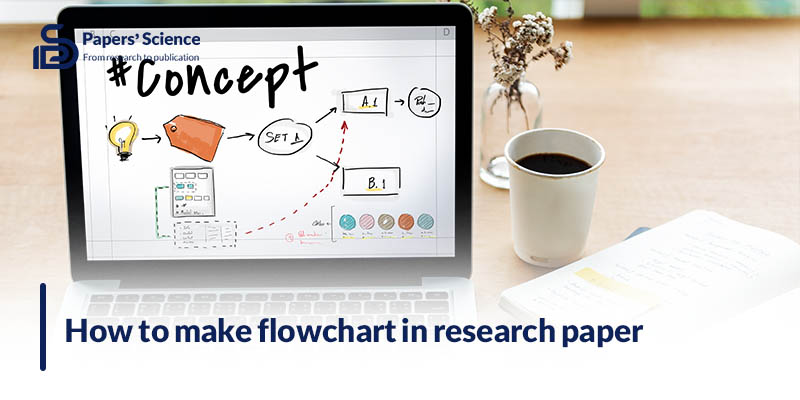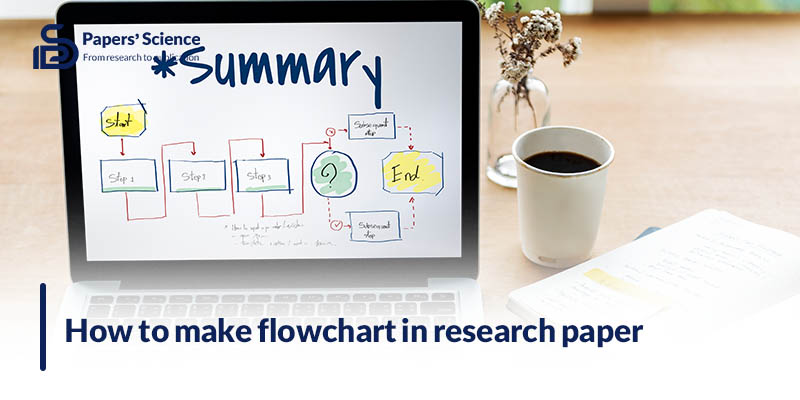How to Make a Flowchart in a Research Paper?

It is an undeniable fact that making a research paper often involves navigating complex ideas and intricate methodologies.
One of the most common issues students and teachers face is creating a flowchart in a research paper.
Whether you are a seasoned researcher or just beginning, mastering flowchart creation can elevate your paper’s quality and impact.
In this guide, we will be exploring step by step “How to make flowcharts in research paper?” enhancing its structure and facilitating the comprehension of complex data.
Join us to uncover the creative and practical aspects of integrating flowcharts into your research paper, enhancing your ability to communicate findings effectively.”
How to make a flowchart in a research paper?
Creating a flowchart in a research paper can significantly enhance the clarity and structure of your work.
Here’s a step-by-step guide to help you seamlessly integrate flowcharts into your papers and academic writing:

Step 1: Identify key information
Begin by pinpointing your research’s critical information or processes that can benefit from visual representation. This might include data flows, decision points, or the sequence of your methodology.
Step 2: Select a tool
Choose a software or tool for creating your flowchart. Common options include Microsoft Visio, Lucidchart, or simple tools like Microsoft PowerPoint or Google Slides. Select one that suits your comfort and needs.
Step 3: Start with shapes
Start by inserting shapes for your flowchart elements. Use rectangles for processes, diamonds for decisions, and arrows to connect them. Keep it simple and use labels to describe each shape’s content.
Step 4: Layout & design
Pay attention to the layout and design of your flowchart. Ensure a logical flow from left to right or top to bottom. Use consistent colours and fonts to maintain a professional appearance.
Step 5: Add content
Populate your flowchart with content. Describe each step or decision concisely and clearly. Use short, descriptive text to convey the necessary information.
Read More: How many rejections before getting published?

Step 6: Connect elements
Connect your flowchart elements using arrows to show the sequence or decision-making process. Make sure the connections are intuitive and easy to follow.
Step 7: Review & refine
Take time to review your flowchart critically. Ensure that it accurately represents your research process and that there are no ambiguities or errors.
Step 8: Incorporate into your paper
Once your flowchart is ready, integrate it into your research paper at the appropriate location. Provide a brief caption or explanation to guide readers in interpreting the flowchart.
Step 9: Formatting
Ensure that your flowchart aligns with the formatting guidelines of your paper, whether it’s APA, MLA, or another style. Consistency is key.
Step 10: Final check
Before submitting your paper, double-check the accuracy and formatting of your flowchart to guarantee that it seamlessly complements your research narrative.
The advantages of making flowcharts in research paper

Flowcharts are invaluable tools in the world of research papers and offer many advantages that elevate the quality and clarity of your work.
First, learning how to make a flowchart in a research paper provides a visual roadmap through the intricate landscape of your research.
They serve as a navigational aid, guiding you, the author, and your readers through the complex web of ideas, concepts, and data.
This visual clarity enhances understanding, making your research paper more accessible to a broader audience.
Moreover, flowcharts facilitate concise and efficient communication.
They condense complex processes and relationships into digestible visual representations, allowing for the swift conveyance of information.
This streamlines the reading experience and enhances your ability to present findings concisely.
Further and even more importantly, flowcharts promote consistency and organization in your research paper.
They help you maintain a logical flow, ensuring that your arguments are presented in a structured and coherent manner.
This organization enhances the overall professionalism and credibility of your work.
Furthermore, flowcharts encourage critical thinking. They require you to distill your research into its essential components, aiding in identifying gaps or areas for improvement in your study.
Final words
In conclusion, incorporating flowcharts into your research paper is a powerful tool that can elevate the quality of your work.
These visual aids enhance clarity, organization, and the efficient conveyance of complex information.
As you start your academic path, remember that a well-constructed flowchart is not just a supplement; it is a roadmap that guides both you and your readers through the intricate terrain of research.
We want your opinion: Have you used flowcharts in your research papers? If so, how did they impact your work?

If not, do you plan to implement them in the future? In the comments below, share your thoughts and experiences about “How to make flowcharts in research paper?”!



